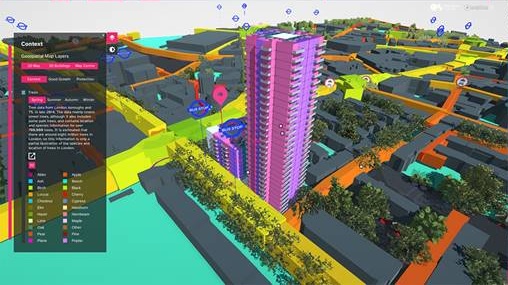The Mayor of London and Bryden Wood have launched an updated version of housing design app, PRiSM 2.0, to help London’s homebuilding strategy
Bryden Wood and Cast have partnered to release a new version of the PRiSM app, which harnesses the latest digital technology and data to help design and build manufactured homes.
The new app is the latest development in London’s homebuilding strategy and the next step towards the technology and training that City Hall’s Covid-19 Housing Delivery Taskforce called for in July.
London is the first city in the world to make a freely available app of this kind, at a city-wide level, sharing expertise and using technology to transform the design process and get the city building the homes Londoners need.
Tom Copley, deputy mayor for housing and residential development London, said: “The Mayor and I are determined to harness the latest technology to build the homes that Londoners need, so I’m delighted to support the launch of PRiSM 2.0.
“The app is a ground-breaking solution to housing design which will help encourage the use of new modern methods of construction across the capital.
“This open-source programme shows the huge potential of digital innovation in housing and can play a key role in getting our city building again, despite the challenges posed by the pandemic.”
Encouraging MMC in London
The aim of the free-to-use app is to encourage the uptake of modern methods of construction (MMC) systems across the industry and to demonstrate that MMC is a suitable option for many housing sites across London.
Users of the new PRiSM 2.0 app will experience a 3D environment in which to design their housing schemes thanks to brand new features and extensive upgrades to the technology.
They will also be able to explore numerous new data sets about the surrounding area, which include:
- Building and neighbourhoods in greater detail
- Local amenities
- Ecology (location and species of trees) and weather patterns
- Road information, transport infrastructure and site accessibility
- Land classifications.
A greater understanding of sites’ constraints and restrictions will mean better planning for construction and improved intelligence about which manufacturing process might suit councils’, housing associations’ or developers’ requirements.
The PRiSM 2.0 app is the first step towards a digital planning approach.
The scope of the new app has also now been expanded to include a much larger number of design and construction systems, including Bryden Wood’s ‘Platforms’4 approach to bespoke design with manufacturing-led efficiency.
In addition, PRiSM 2.0 also offers a larger pattern book of housing types and within these, much greater design flexibility.
These include:
- New housing typologies, including mansion blocks
- Basement and podium design functionality
- Apartment setbacks
- Manual core positioning
- Visualisation of windows and roofs.
The initial version of the app launched last year to accelerate the design and construction of high-quality homes built using MMC.
The PRiSM 2.0 design app combines the Mayor of London’s spatial planning rules with housing manufacturers’ expertise to allow planners and developers to quickly assess the viability of developing a site for MMC.
Enabling change
Phil Langley, Bryden Wood board director, commented: “The audience for the app is very broad. Developers are using it to assess initial feasibility of PMH for their sites.
“Designers are using it to understand the potential for manufacturing systems. Manufacturers are exploring it as a design tool. And local authorities are applying it to standardise their estates.
“We designed the app with collaboration front of mind – so it’s really simple for multiple users to share and revisit designs again and again.”
Mark Farmer, CEO Cast Consultancy, added: “It is clear that policy change is going to continue to drive the digital agenda in planning and the use of modern methods of construction and PRiSM 2.0 is a key part of enabling that change.”

















